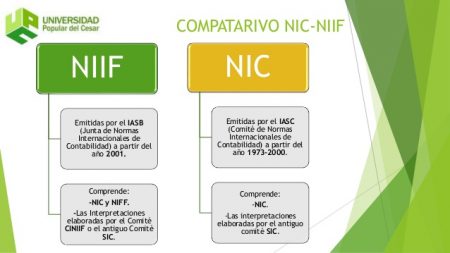We are going to discuss today Difference Between IFRSs And IFRS. Broadly speaking, IFRS and SAK are not much different, IFRS is also a guide and procedure in presenting a company’s financial statements, only with international standards.Both have differences in application and technical preparation. The most obvious difference between SAK and IFRS is that the institutions involved have different standards in the drafting and approval process. This results in a difference in the application function between SAK and IFRS. In addition, in terms of application, there are other differences between SAK and IFRS. The following is a discussion of the differences between SAK and IFRS.

Differences Between IFRSs And IFRS In Accounting
Table of Contents
1 Financial Accounting Standards (SAK)
1.1 a. Reasons for using SAK
1.2 b. Types of SAK
2 Explanation of International Financial Accounting Standards (IFRS)
2.1 a. Application of IFRS in Indonesia
2.2 b. The advantages of using IFRS
3 Differences between IFRS and IFRS
Financial Accounting Standards (SAK)
Financial Accounting Standards (SAK) are a reference procedure for the preparation of financial statements so that there is uniformity of concepts in the presentation of financial statements. Uniformity of reporting will make it easier for accountants in your company to create and explain financial reports. In addition, SAK is also an indicator in compiling a unified language to analyze your company’s financial statements. SAK is a system designed to regulate most of the presentation of financial statements, both conceptually and technically.

a. Reasons for using SAK
SAK has been prepared and agreed upon by many relevant institutions with expertise in accounting. That is what makes SAK a reference for managing financial reports at the national and international levels. In Indonesia, SAK is prepared and approved by the Indonesian Accountants Association (IAI). After being passed, SAK was then compiled in the form of a book called Statement of Financial Accounting Standards (PSAK) as well as a sign of the inauguration of the change in Indonesian Accounting Principles to SAK in 1994. In its preparation, PSAK contains theories that refer to the practice of preparing corporate financial statements. In its preparation, SAK is an application of several existing accounting standards such as IAS, IFRS, ETAP, GAAP, Islamic PSAK and also SAP.

b. Types of SAK
In its application, SAK is divided into four types, namely PSAK-IFRS, ETAP, Sharia SAK and SAP. Each of these types has a different function, so not all of them are suitable for use in your company. For example, Islamic SAK which can be used by business entities with sharia transactions that refer to the MUI fatwa. In addition, there are Government Accounting Standards (SAP) issued by the Government Accounting Standards Committee which are prepared for installation to both central and local government. SAP functions to manage State finances in a transparent and accountable manner.
Although there are four types of IFRSs in Indonesia that have different applications, with the existence of SAK, there is an outline of the concept of uniformity in managing financial statements. This made him realize how much accounting standards are needed to facilitate the preparation of financial reports, make it easier for auditors, and make it easier for reading financial reports.
Explanation of International Financial Accounting Standards (IFRS)

IFRS is an international accounting standard published by the International Accounting Standard Board (IASB). In its preparation, the International Accounting Standards (IAS) involved four major world organizations, namely the International Accounting Standards Agency (IASB), the European Community Commission (EC), the International Capital Markets Organization (IOSOC), and the International Accounting Federation (IFAC).
Initially, IFRS was a development of global accounting standards aimed at encouraging the use of high-quality global accounting standards pioneered by the IASB, which was formerly known as the International Accounting Standards Commission (AISC). Now, after being successfully published, IFRS is the system used by most countries in managing both national and international business. In Indonesia, currently IFRS has been adopted. This is because Indonesia is part of the IFAC which requires its members to comply with the Statement Membership Obligation (SMO), so Indonesia must make IFRS as one of its accounting standards.
The advantages of using IFRS
Applying IFRS financial standards can increase the comparability of financial statements and provide quality financial reporting information in international capital markets. Another benefit that can be felt by implementing IFRS in your company is that it can remove barriers to international capital flows by reducing differences in financial reporting requirements.
In addition, IFRS can also reduce the use of multinational company financial reporting costs and costs for financial analysis for your company’s financial analysts. IFRS can improve the quality of your company’s financial reporting towards best practices. So, although Indonesia has to adjust financial standards with IFRS, it turns out that this will actually make financial reporting easier.
Difference between IFRS and IFRS

| Difference | SAK | IFRS |
| Source | PSAK No.1 (Revised 1998) Presentation of Financial Statements | IAS1, Presentation of Financial Statements |
| Balance sheet | Requires the presentation of current and non-current assets, except for certain industries such as banks. | The presentation of neither current assets nor non-current assets, only when the presentation of liquidity is more relevant and reliable for a particular item |
| Financial Performance Report | Income statement | Comprehensive income statement |
| Income statement | Just like IFRS. However, there are differences in the details on the items presented on the initial income statement. | It does not have a standard format although expenses must be presented by choosing one of two formats. |
| Cash Flow Statement (Format and Method) | Same as IFRS but in some entities must use direct method. | Standard post but the provisions are limited to its content: using direct method or indirect method |
| Extraordinary Post | Extraordinary items still need to be reported. | In IFRS it is prohibited to use extraordinary items. |
| Presentation of recognized gains and losses (Income and Other Comprehensive) | It is recognized that there are gains and losses which are presented in the report of changes in shareholder equity | To present a financial statement that recognizes the gain and loss in a separate note or not in the statement of changes in shareholder equity |
| Result of Presentation of Associated Companies | In particular, it does not require an after-tax display of share yields | Using the equity method which shows the share yield after tax |
| Significant Disclosures About Associations | Less disclosure compared to IFRS. Information on significant assets, liabilities, income, and returns that is not required. | Provide detailed or significant information on assets, liabilities, income and results. |
| Responsibility for financial statements | Management | Unregulated |
| Financial Report Components | Balance sheet, income statement, cash flow statement. | Statement of financial position and income statement |
